Re-Discovering Puerto Vallarta’s World Class Fishing
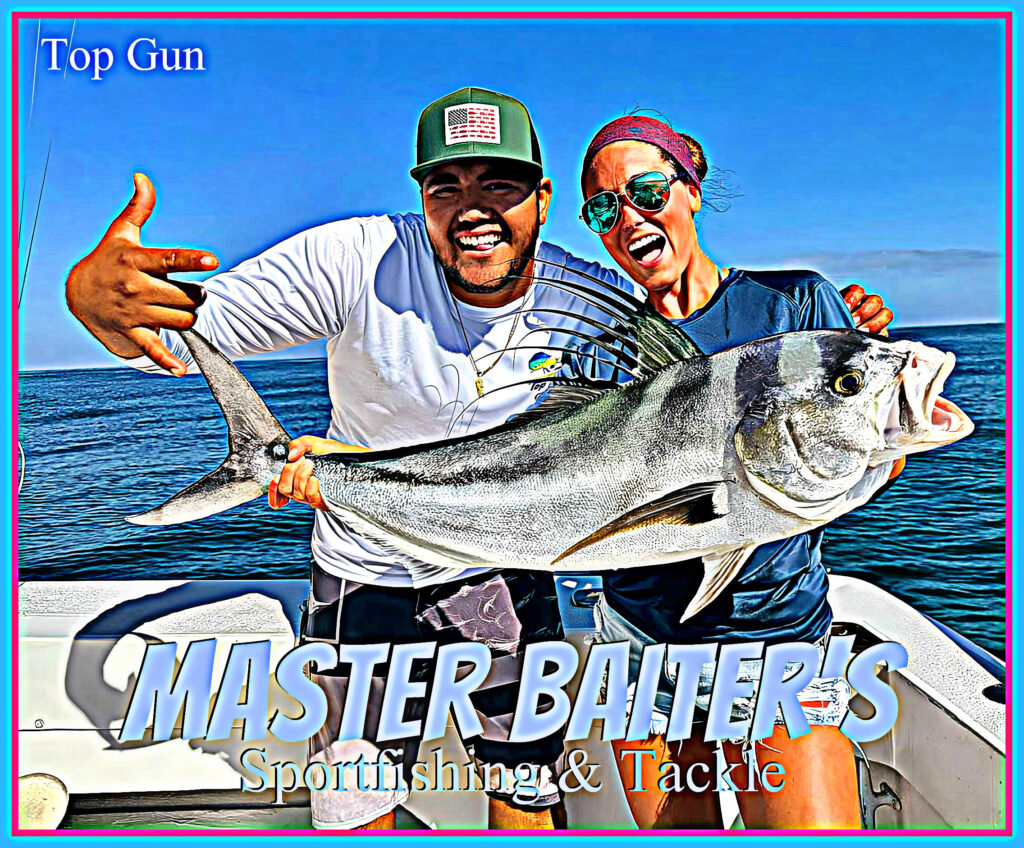
In the world of fishing Puerto Vallarta (pronounced Puerto Viarta) seems to be the land Fisherman and fishing publications have forgotten. Famous from the time Puerto Vallarta was a Puebla, PV is known for some of, if not the best fishing in all of Mexico. Famous for Huge Black Marlin, Monster “World Record Possible” Yellowfin Tuna, Blue Marlin, Sailfish, Dorado, Striped Marlin and the list goes on. Naturally depending on the season will determine the Gamefish available. Puerto Vallarta (PV) has several personalities in the form of changing seasons and species making the entire area a fishing wonderland throughout the year. PV is perfect for the beginner angler to the professional.
People always ask me the best time of the year to be in Puerto Vallarta for fishing. Normally this means “when are the big fish in town”? My answer to that is always “the warmer the water, the hotter the fishing”. Translated in simple English, Mid-summer to fall! In this time of the year our primary fishing grounds of El Banco or The Bank, Corbetena, El Morro / Marietta Islands, Punta Mita north to San Pancho and of course several “hot spots” inside the Bay of Banderas. Each of these areas will have specific species in the area. This will mean the fishing grounds you head out to will determine what you’re going to catch.
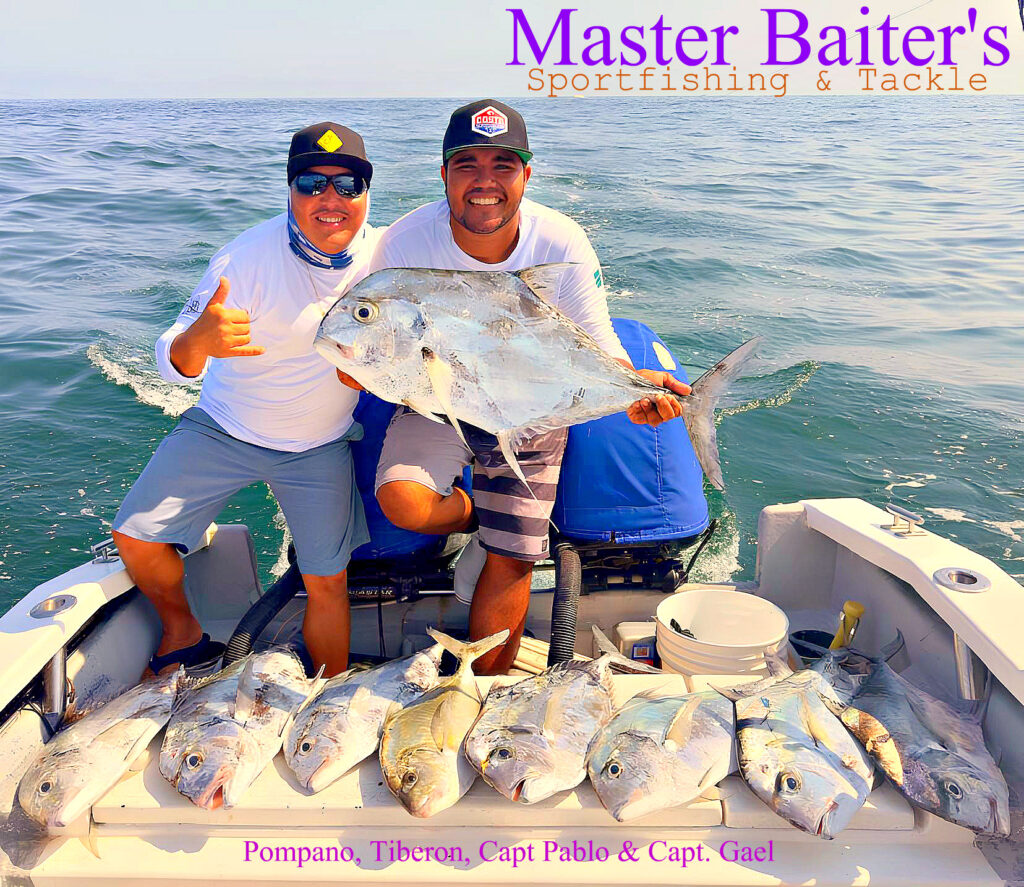
Take El Banco or the Bank. I always say “they’re bigger at The Bank”. Located 50 miles north of PV it’s essentially a few sharp peaks, similar to a Stalagmites coming up from an underwater mountain range. The peaks of these Stalagmites are about 60 ft under the surface of the ocean. You need electronics to find this location so you know where you are. Once there hovering over or trolling the area will produce at times world record competing Yellowfin Tuna, Black and Blue Marlin among several other gamefish. We’ve seen some huge Dorado boated from this location as well. El Banco is primarily a summer fishing ground. Seldom do you hear much about El Banco outside of the warm water days unless it’s an El Nino year. Those coming to Puerto Vallarta in the winter months looking to target Marlin, YF tuna etc. will be disappointed to hear that they’re all “vacationing” in Costa Rica! Over the years, primarily due to extreme fuel cost, El Banco is ignored in favor of Corbetena. The deal here is what is happening at Corbetena is not what’s happening at El Banco. While many times the conditions will be the same, many times they’re not. What does this boil down to? Well reports from private and charter boats will help the decision process. But in reality fishing is a guessing game, we plan, we predict and we act. Hopefully your plan will work. For me El Banco is the second best fishing location we have with Corbetena being the most flexible.
Which brings us to Corbetena located 36 miles out from Marina Vallarta, about 25 miles to the south of El Banco. To me Corbetena is a more reliable locations with basically the same species as El Banco. In fact the entire area between El Banco and Corbetena are fertile fishing grounds where many a tournament winner has been boated. Strangely enough people will focus on El Banco or Corbetena and ignore the space in between. Mostly because of the cost of fuel presently at about $5.00 usd per gallon (and rising), you can understand how the cost of fuel will impact not only the way you fish, but many times which fishing grounds you will choose! Frankly this level of fishing requires a full tank and a credit card with plenty of room on it.
Now when it comes to the fishing aspect of Corbetena (aka the Rock) there are always some sort of “attractive” gamefish in the area. Naturally like El Banco you’ll see the Pelagics in the summer or warm water time frames. Yellowfin Tuna seem to be more “reliable” at the Rock mostly year round. Summer months YF Tuna can range from 40, 60, to over 180 lbs with occasional Cows (YF Tuna over 200 lbs) and few Monsters (over 300 lbs). This is a result of over fishing by Seiners. The good news is the Seiners or production Fishing boats have all but gone out of business. While we don’t see the monster schools of Tuna like we used to. The Seiners are now targeting other species like Sardines. So Yellowfin tuna are now in smaller schools which are too small to grab the attention of these production fishing outfits raping the Tuna Populations. So the good news is the Tuna are picking back up in numbers and that’s a good thing. Also in the warm water season Black Marlin seem to outnumber Blue Marlin especially in the late August to mid-January time frame. Black Marlin will average 500 to 700 lbs with some big boys over 800 lbs. Blue Marlin can also get very large, normally not quite as large but 500 lbs for Blues are normal. Dorado are normal in the area all around the Rock, normally more to the north east direction, but frankly where ever the bait is, they’ll chase it. At times like this when water temperatures climb to as high as 91 degrees YF Tuna will “sound” or go deep to regulate their body temperatures. Your electronics are vital at this point so you can see where the temperature breaks are and what depth to set your down riggers. At times like this Jigging is your best option. Sailfish are pretty much in the area all year round with the coldest months of the year seeing sparse numbers. But then again the freak (catching fish) factor comes in when there is plenty of bait, they seem to ignore the cold water, as will Marlin and even Tuna. It’s fishing and an inexact science. Once we enter mid-January we start to see Striped Marlin coming down from the Cabo area. Striped Marlin like water temperatures just a touch cooler than our normal water temps in the warm water months. In fact when we see Stripers coming into the early season we know water temperatures will soon be warming as they follow the currents north from the southern waters. So Stripers are an indicator species telling us when the water is going to start warming or cooling at the end of the fishing season leading into the winter. Frankly Corbetena is a Summer Season, warm water fishing location just like El Banco!
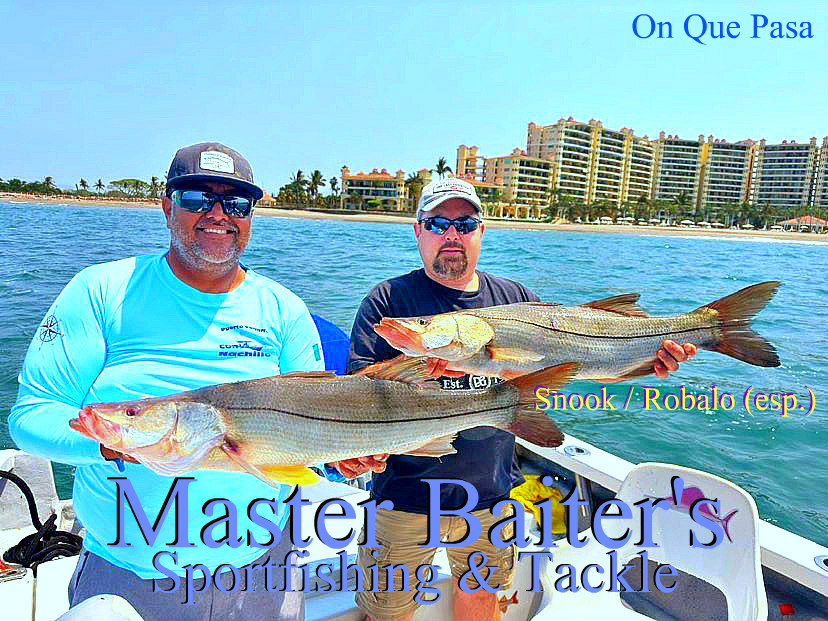
As a general rule both Corbetena and El Banco are at their best from mid-July to mid-January. But many times you’ll still be able to boat Dorado and Sailfish, even Marlin into mid-February. But after that these locations go into hibernation of sorts. Yes there will be fish in the area, but they’ll be winter species like Jack Crevalls, some Striped Marlin and some Sailfish. Not really a location to take too seriously after February.
Coming closer in we have the Marietta Islands and El Morro six miles to the south. The Marietta Islands are a protected game reserve and is now, finally patrolled and well you don’t want to get caught fishing this area too closely. El Morro six miles to the south are essentially some rocky islands, not too large, but upwelling’s keep the nutrients up in the area and thus smaller bait fish. Sailfish are normally very active in this area. Anywhere from the east side of El Morro to Corbetena can be dense with Sailfish come mid-September to late February. This is not to say Sailfish are not in the area before September, but rather the density or abundance about doubles at this time. Once we move into the winter months this area also will go into hibernation with fewer gamefish species to choose from. Jack Crevalls, Sierra Mackerels, maybe some Snappers, freak Sails are always in the area. For the winter months anything past this area heading to the deep water fishing grounds is more or less a crap shoot. We should note that overnight trips and multiday trips will always produce impressive results. We just don’t know what that “impressive result” will be. Ja Ja…
Now the area around Punta Mita north to San Pancho during the warm water summer months will have a concentration of Dorado, Sailfish, Rooster fish, Jack Crevalls and Sierra Mackerels. North of the point of Punta Mita even late in the winter months for some reason will have Sailfish roaming the area. Personally I believe the warm water from the sea of Cortez trickles down past Mazatlán and along the coast line in this area. So even the late winter months can produce Sailfish if you’re willing to go the distance and pay the price. Now I mentioned Rooster fish, a local favorite because of the arm burning action they produce and the shear force with which they fight. The charts that show seasons for Rooster fish are iffy at best. Roosters seem to move in, in cold water, warm water, whenever they like. It’s been my experience when we have heavy amounts of Sardines in the area, Rooster will soon follow. But this rule doesn’t hold true all the time.

Inside the bay in the summer months is not the place to be if you’re looking to catch big fish. In fact the bay is strongest in the winter months. This is the personality I am referring to, everything changes in the winter months but I’ll go into that shortly. During the summer or warm water months you’ll find the “trash line”. Now the trash line can be 28 miles out or it can be in the bay. The trash line is important for summer fishing. You see the trash line if formed from organic matter like twigs, leaves, seeds, all sorts of things that wash down the PV Hills and wash into the bay. What this results in is a thin or maybe thicker lawyer of “dirty” water behind a line of this organic matter I just described. Smaller fish will feed on these leaves and seeds, which in turn draw in larger fish. It looks ugly sure, but in reality experienced Captains know how to work this with digging lures and running baits along the “trash” in the blue water side of the line. It’s a blessing that isn’t always perfect, but when it’s good, it’s great! For those fishing PV’s Fishing grounds summer is not the bays strongest time of the year and unless you’re looking for smaller gamefish, suitable for family fishing, you won’t see anything larger than 20 lbs on average. Arctic Bonito aka Chorras will be around the area in decent numbers in the 20 lb size range. Yellowfin tuna can be caught by Yelapa, south of the los Arcos “islands” at times. Jack Crevalls seem to defy the seasons at times and when they’re in, they’ll be over 25 lbs to 50 lbs. Strong fighters, a fly fisherman’s dream, this species is strong, abundant and fun to catch. But not the best eating, yet there are some restaurants that can make them delicious!! Basically in the summer months the bay is not your best option. It’s not a bad option, but you won’t find any pelagics unless it’s a freaky situation, which happens more often these days for some reason. One thing I should mention is when it rains we see the Snook or Robalo in Spanish number pick up. They like the “agua dulce” or sweet water as fresh water rushing into the bay is referred to as. They can reach up to 45 lbs and is a white meat fish. Another species we don’t hear too much about but should.
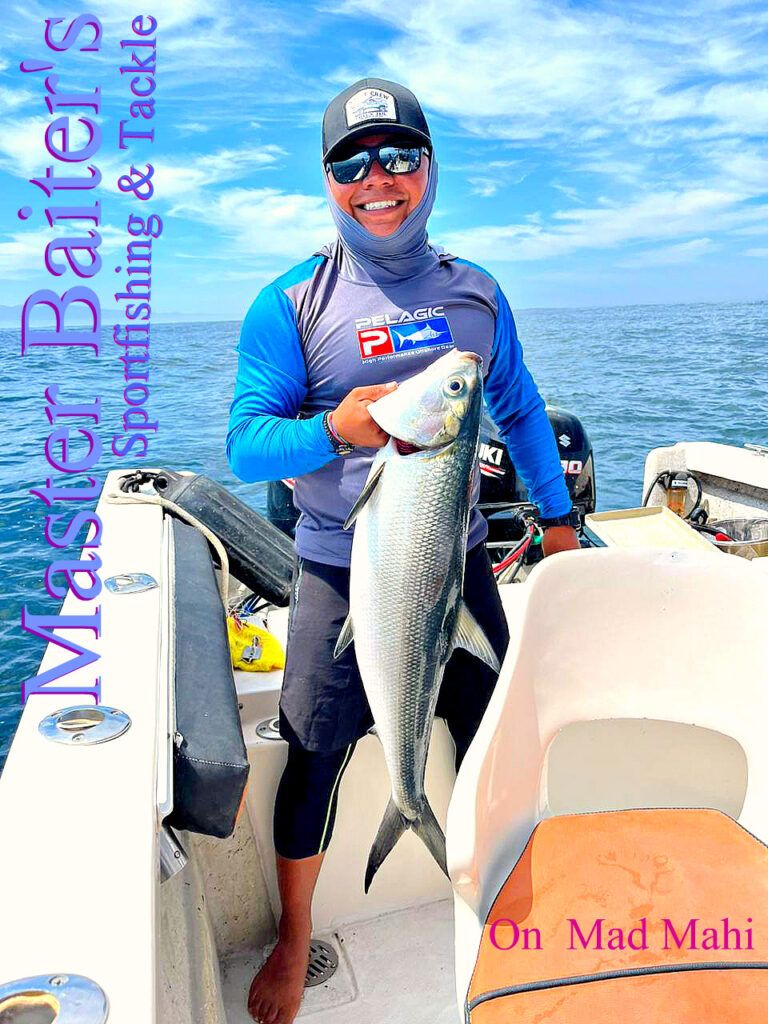
Now for the high season tourist, they mostly like shorter day trips. The bay is perfect for this person. With cooler water come February we’ll see the bay come to life, surprising but true. Once we see the Jack Crevalls come in we know for the most part it’s cold water, yet we do see freak Jacks in warm water as well. They will follow the bait like all the other species, but this is not the norm. Red Snappers move in ranging from 15 to 35 lbs in the mid-bay area. When water temperatures reach their coldest of the year you can catch Sea Bass and Grouper in front of the river mouths. Ameca River just to the north or Marina Vallarta is famous for this yet you don’t hear much about this. Since many times the water in the bay will have warm spots, it’s not too unusual to find Dorado and Sailfish, even Striped marlin will come into the bay during the winter fishing season! So strangely enough bay fishing in winter is your best winter fishing! Winter as the “off season” for pelagics is the best time of the year for short day fishing. Affordable for sure and frankly most people fishing in PV during the winter months are more tourist looking for some fun on the water. Not the professional type looking for that Bucket list fish. Something that most people don’t think about is our whale Season. Come early November Whales move into the bay to play and breed! With massive amounts of Krill Squids and Shrimp (Whale food) you have to remember fish are normally not around Whales! For some reason they think they’ll be a side dish to the Krill feast! FYI when you see whales, you may want to take turn the boat in the opposite direction. Now seeing Whales is fun and well super impressive. At that point you’ll need to decide if you want to see the whales or fish. Now these boats will have to stop the boat, take their lines out of the water until they pass. If this is a family day and you have children of all ages on the boat, then your fishing day may be over at that point (Ha ha). It turns into a “Love / Hate” thing.
Lately there has been a lot of attention about the Tres Maria Islands, located just under a hundred miles from Marina Vallarta. This is a Yellowfin Tuna hot spot. It should be noted there are protected areas around the larger middle island, Madre Island. Legally you are supposed to stay twelve miles off this island. Up until recently this was a prison island like Alcatraz. It’s now a cultural center and the business of protecting the environment is being taken seriously. In the winter season we see many high density, long range fishing operations / boats come into this area and boast of catching 250 lb Yellowfin tuna on a regular basis. And they do, but the deal is they’re fishing in the “off” season for Tuna. Come warmer water months the numbers increase as do their sizes. Yes you’ll catch fish outside the “buffer zone” as somebody named it. At times seeing a 250 lb plus Yellowfin tuna hurl itself from the water ten feet in the air reminds me of flying Volkswagens’. Impressive for sure and it will get your blood boiling from this amazing site. The winter months force those looking for “cows” have to come in closer. To be straight up most people will fish inside the twelve mile “buffer zone”. Once you’re inside the six mile range you could be approached by the authorities. There are three islands in the Tres Maria Islands chain. The first island you come on is Juanito at ninety miles out from Marina Vallarta. Forty miles north is “Madre Island” which is huge and a fishing wonderland when it comes to Yellowfin Tuna, Black Marlin and Rooster fish around structure. Forty miles north of Madre Island is Cleofas, a smaller island but still fertile ground for world class Gamefish. Between these three islands you can at any given time boat a world record Yellowfin Tuna. We’ve all seen the “Unofficial World
Record” Tuna pictures pushed during the winter months. But in reality the summer months mean every time you drop a line in the water you could quite possibly come up with a world record YF Tuna! One interesting thing is it’s the “foreign” boats that leave come May to meet their local markets in Southern California. This means the best time of the year is essentially wide open.
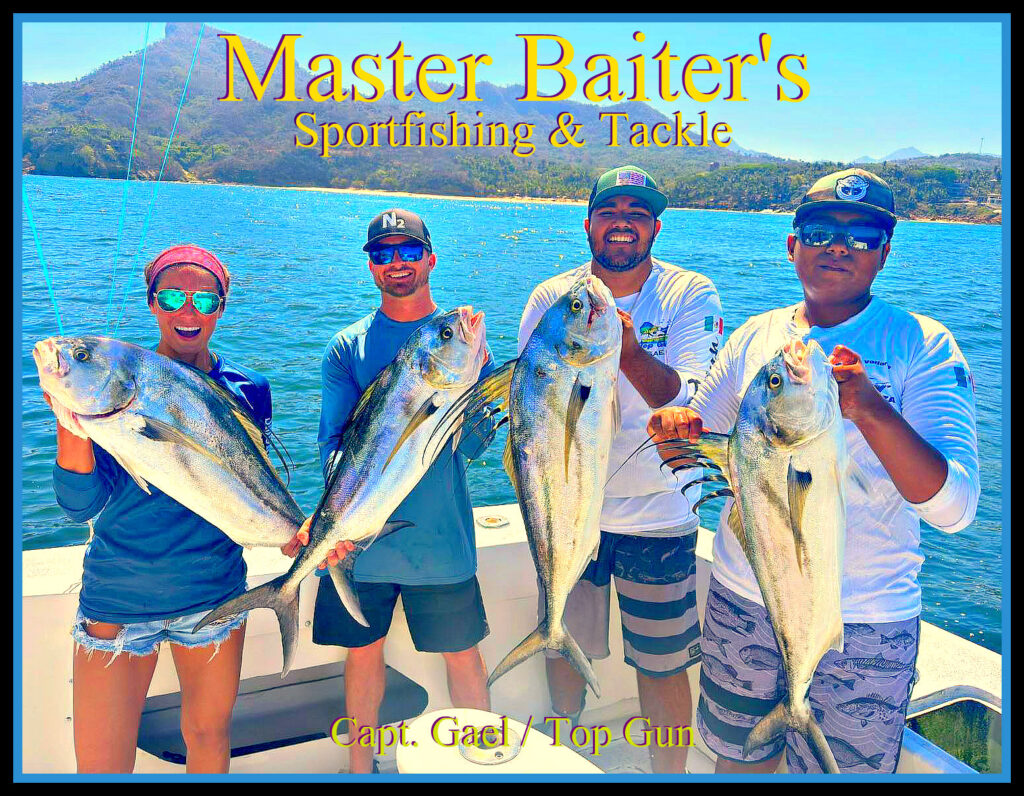
One concern about this area has always been hurricanes. Foreign “high density” long range boats push this idea, but the locals know better. Remember we have Regattas, Cruise ships and all sorts of private craft cruising the area all the time in the summer season. There is always plenty of warning about hurricanes or stormy seas. Being just hours from Puerto Vallarta and even closer to Mazatlán, there is no real concerns for safety as long as you’re paying attention to the weather reports!
So if you’re looking for general rules, The summer months from July to mid-January you will find Sailfish, Dorado, Blue and Black Marlin, Cubera Snappers, Yellowfin tuna, Rooster fish, maybe Amber jacks. Come the winter months, January / February to April will see most of the local action in the Bay of Banderas with only the fishing fanatics heading to Corbetena or El Banco. Normally your best options are an eight hour trip to Punta Mita and surrounding areas like El Morro and north of Sayulita. But people do catch fish on longer multiday trips.
There are two factors unaddressed which would be water temperatures and bait. We see water temperatures as an indicator. We know once we hit 79 degrees or so we start to see Striped Marlin move in, shortly thereafter when water temps hit 84 we start to see Blue Marlin move in along with Yellowfin Tuna in 40 to 80 lbs. Sailfish start to show up in March but it’s just a trickle. Dorado for the last few years have been a late bloomer showing up in decent numbers around July, but can be later, much later. Remember the “fish charts” are a average and a “finger in the wind” educated guess. In 2000 we would see Dorado show up in mid-May. I’ll let you come to your own conclusions on that …. Similarly we see water temps drop come the second week of January like clockwork. The “chill” factor hits Black Marlin hard and will be the first to “bug out”. Blue Marlin and Sails will hang around then all of a sudden Striped Marlin move in. We normally get between two to six weeks of Stripers, but this past season we’ve seen Stripers “hangout” all around the area, including inside the bay with some smaller freaks boated around La Cruz Marina to Los Arcos.
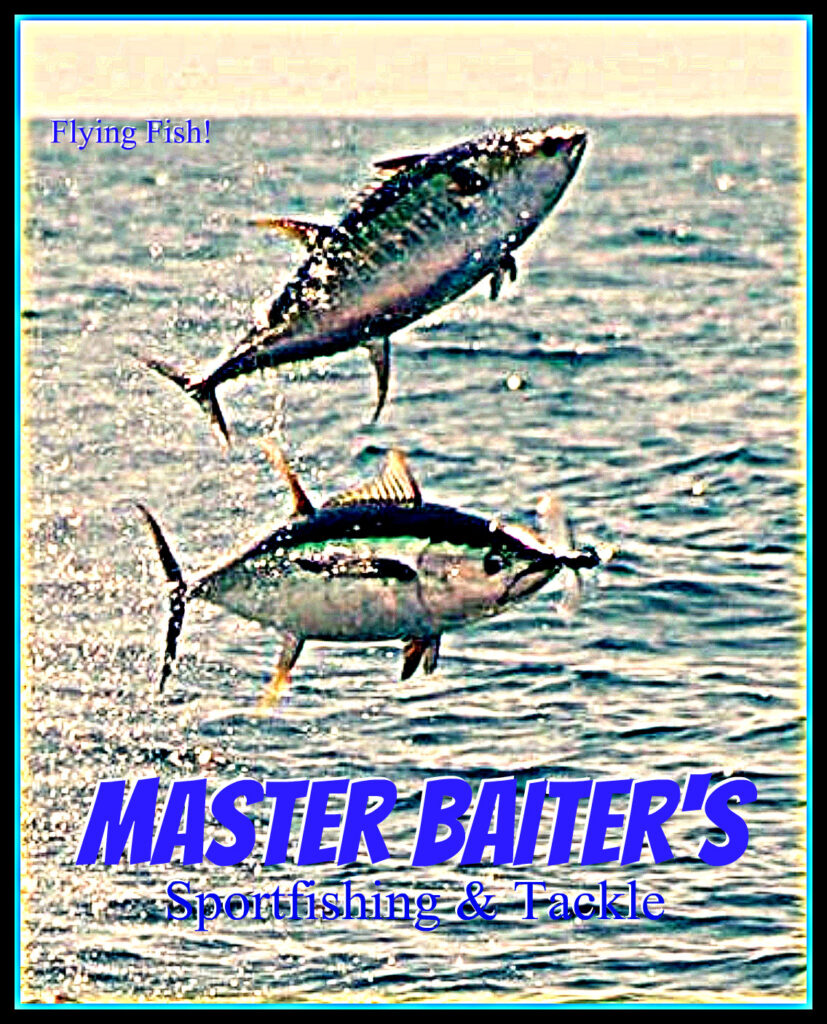
Last but not least we need to talk about Bait or Karnada in Spanish. Depending on season we see a wide variety of baits that will draw and keep the attention of the local species and will many times be such a draw that when the “normal” time to leave relative to water temperatures will just be ignored. Yep, they’ll “hang” around with the fast and easy food. Bait is also an indicator of where we are seasonally. We’ll see Krill Squid, Red Tuna Crabs and Squids of all sizes start coming in with the warm water northern currents. Yellowfin tuna will follow these like my ex-wife chasing a Nordstrom’s shoe sale! With Flying fish, Goggle eyes, Bullet Bonito or baby Bonito, Skip Jack Tuna, Green runners, Sardines and the list is endless! Bait can be an issue at times, when there’s too much bait, you can’t turn the head of any gamefish in the area! Abundant bait will keep a pelagic in the area even when the water temperatures are less than ideal. But then again, who doesn’t like easy and free food.
Until next week, Don´t forget to kiss Your Fish!

Web page: www.MasterBaiters.com.mx , Local Phone at: (044) 322 779 7571 or our international number is: 011 52 322 209 1128 10 to 9 local time. #MasterBaitersSportfishing on Instagram, Facebook, http://www.facebook.com/pages/Master-Baiters-Sportfishing-Tackle/88817121325
The trade name Master Baiter’s ® Sportfishing and Tackle is protected under trade mark law and is the sole property of Stan Gabruk.

